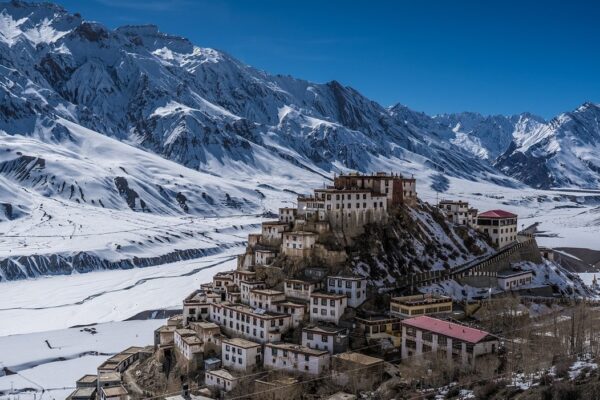Solar-powered avalanche resistant home for Himalayan trekkers
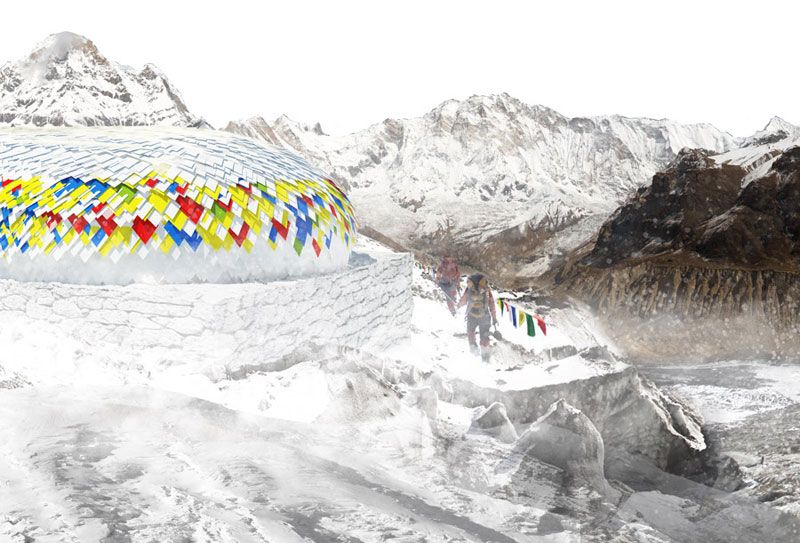
Recently Samarth, Nepal Market Development Programme that works to improve infrastructure in less urbanized areas of Nepal organized International Architectural Contest to develop specialized, modern day, high-altitude shelters for trekkers in the Himalayan country.
Entries for the competition dubbed Himalayan Mountain Hut Architecture contest were to provide comfortable, inviting, safe and weather-poof lodging for trekkers and travelers in Nepal.
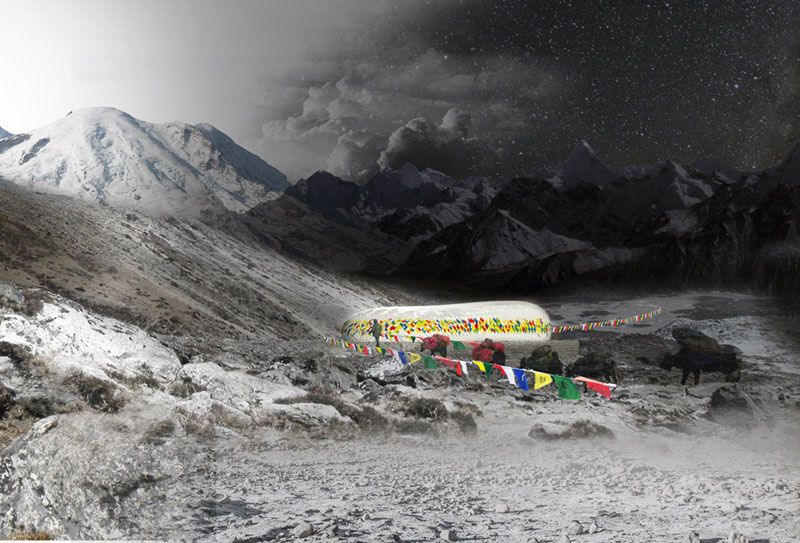
While a colorful easy-to-install pavilion by Italian team bagged the first prize, the most fascinating entry was a tent in form of a sleeping bag designed by a team of designers from Poland. The sleeping bag-like tent bagged second prize in the competition.
The Polish team from ArC2 Projektowa comprising Dorota Szlachcic, Mariusz Szlachcic, Julia Kisielewska and Wojciech Klapcia conceived the high-altitude shelter bag which allows occupants to survive in extreme weather conditions, while being easy to install and extremely energy efficient.
Drawing inspiration from a tent and a sleeping bag – trekker’s two best friends – this Polish pavilion uses poles for its structure, and is covered with carbon fiber, plastic and a layer of aluminum. Internally it features 3-layer cross-section construction that guarantees insulation and ventilation, while outer coating makes the structure resistant to snow, wind, rain and even survive an avalanche.
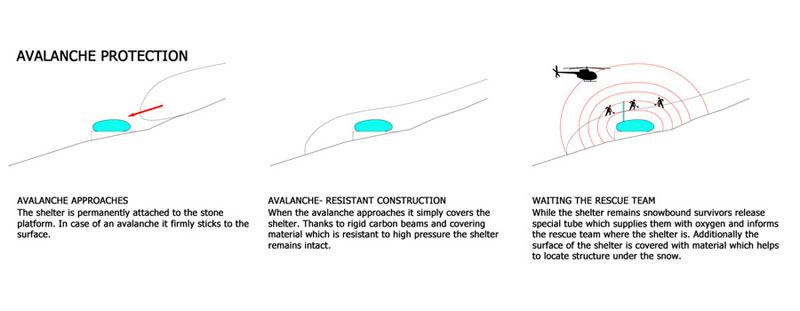
Besides abovementioned traits, four things that make the sleeping bag-style shelter really sublime include:
- The structure’s aluminum layer covering on the inside, which makes it easy to rescuers to find after an avalanche.
- The outer layer of the structure can be cover partially with photovoltaic cells. The solar energy gathered can be used to power the pavilion.
- The pavilion is flexible and light-weight.
- The structure easily adapts to different locations and terrains.
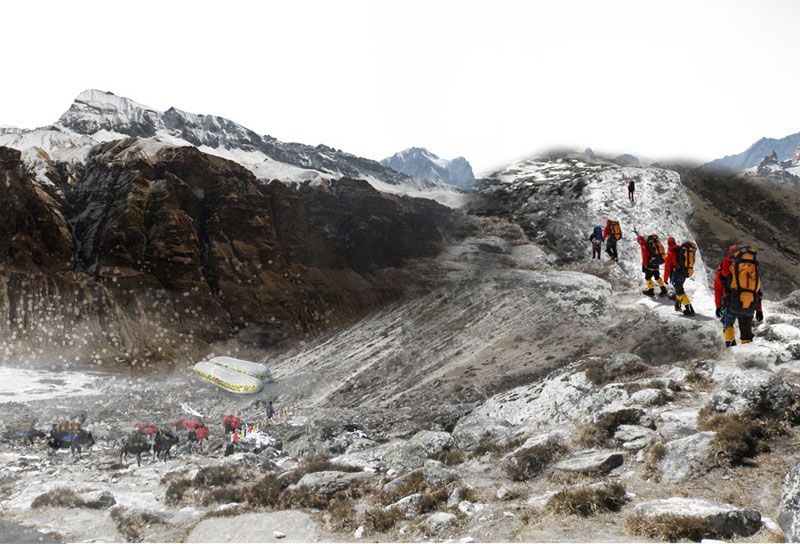
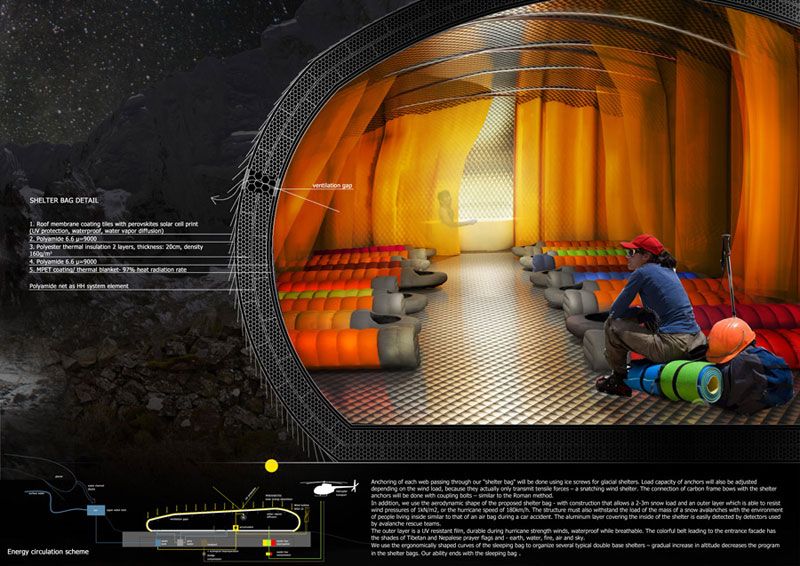
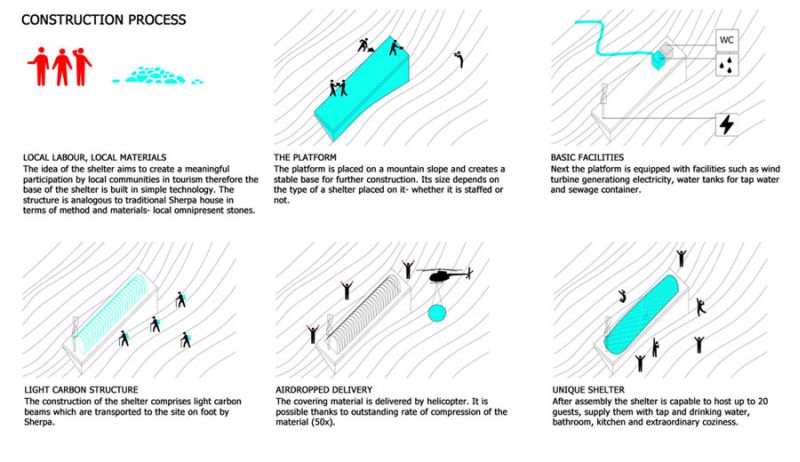
Via: HMMD


